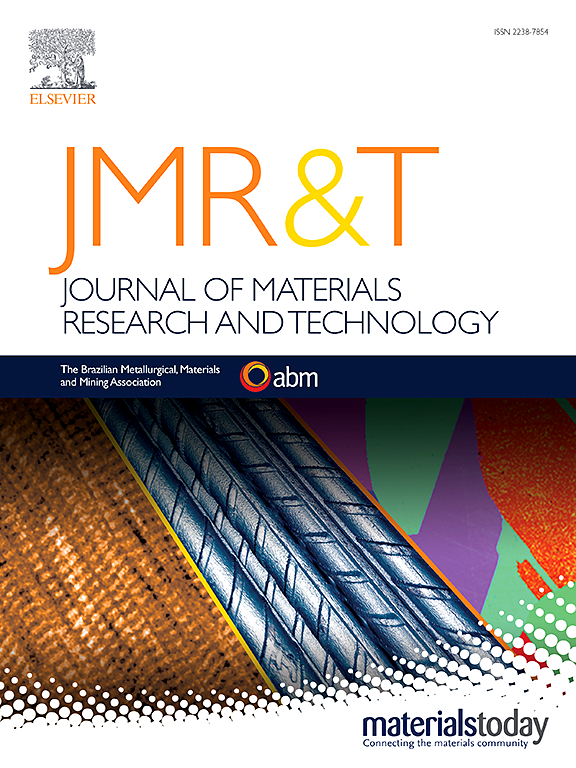The parametric investigation and microstructural characterization of laser directed energy deposited NiCrAlY powder
IF 6.2
2区 材料科学
Q1 MATERIALS SCIENCE, MULTIDISCIPLINARY
Journal of Materials Research and Technology-Jmr&t
Pub Date : 2025-06-11
DOI:10.1016/j.jmrt.2025.06.057
引用次数: 0
Abstract
NiCrAlY as a coating is often used to improve the high temperature strength and oxidation performance of superalloys. Traditionally these coatings are deposited using various thermal spray techniques. Producing these coatings with Additive Manufacturing methods like the Directed Energy Deposition with Laser Beam (DED-LB) process improves the coating-substrate bonding. Subsequently, it enhances the high-temperature capability. To achieve this, understanding the correlation between process parameters and microstructure is crucial. The commercially available NiCrAlY powder is deposited on the alloy 718 substrate in this study. A two level three factor design of experiments was conducted for single track and three-layer track depositions. Statistical analysis was used to understand the effect of the primary process parameters (laser power, scan speed and powder feed rate) on the geometrical characteristics such as height and width of the deposition, and dilution of the substrate. Microstructural studies revealed the transformation in grain morphology from intra-dendritic mode of precipitation to inter-dendritic mode of precipitation with dilution from the substrate. From the Energy Dispersive Spectroscopy analysis, the formation of γ-Ni matrix phase and β-NiAl precipitate phase was confirmed. Samples with low dilution exhibited high hardness in accordance with high β phase content. In the three-layer tracks, the presence of hard and brittle β phase along the dendritic boundaries led to surface cracking due to stress build up.
激光定向能沉积NiCrAlY粉末的参数研究及显微组织表征
NiCrAlY涂层常用于提高高温合金的高温强度和抗氧化性能。传统上,这些涂层是使用各种热喷涂技术沉积的。利用激光定向能沉积(ed - lb)等增材制造方法生产这些涂层,可以改善涂层与基体的结合。随后,它增强了高温性能。要实现这一点,了解工艺参数和微观结构之间的相关性至关重要。在本研究中,将市售的NiCrAlY粉末沉积在718合金基体上。对单轨道和三层轨道沉积进行了两水平三因素试验设计。通过统计分析了解了主要工艺参数(激光功率、扫描速度和粉末进给量)对沉积高度、宽度和基体稀释度等几何特性的影响。显微组织研究表明,随着基体的稀释,晶粒形态从枝晶内析出模式转变为枝晶间析出模式。能量色散分析证实了γ-Ni基体相和β-NiAl析出相的形成。低稀释度样品硬度高,β相含量高。在三层径迹中,沿枝晶边界存在硬脆的β相,导致应力积累导致表面开裂。
本文章由计算机程序翻译,如有差异,请以英文原文为准。
求助全文
约1分钟内获得全文
求助全文
来源期刊

Journal of Materials Research and Technology-Jmr&t
Materials Science-Metals and Alloys
CiteScore
8.80
自引率
9.40%
发文量
1877
审稿时长
35 days
期刊介绍:
The Journal of Materials Research and Technology is a publication of ABM - Brazilian Metallurgical, Materials and Mining Association - and publishes four issues per year also with a free version online (www.jmrt.com.br). The journal provides an international medium for the publication of theoretical and experimental studies related to Metallurgy, Materials and Minerals research and technology. Appropriate submissions to the Journal of Materials Research and Technology should include scientific and/or engineering factors which affect processes and products in the Metallurgy, Materials and Mining areas.
 求助内容:
求助内容: 应助结果提醒方式:
应助结果提醒方式:


